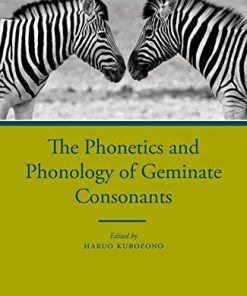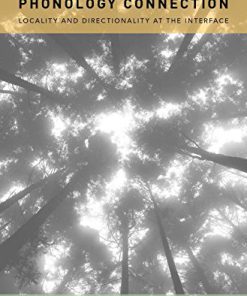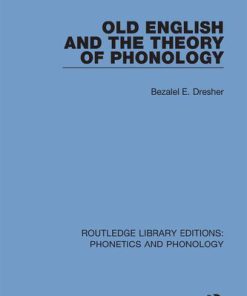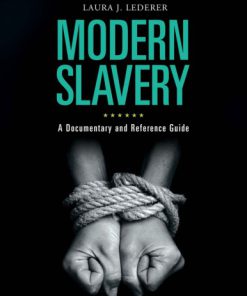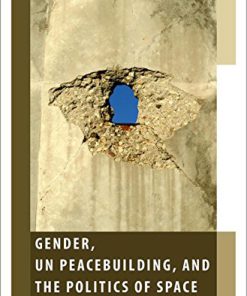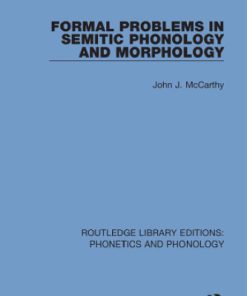The Phonology of Chichewa 1st Edition by Laura Downing, Al Mtenje 0191037733 9780191037733
$50.00 Original price was: $50.00.$25.00Current price is: $25.00.
The Phonology of Chichewa 1st Edition by Laura J. Downing, Al Mtenje – Ebook PDF Instant Download/DeliveryISBN: 0191037733, 9780191037733
Full download The Phonology of Chichewa 1st Edition after payment.
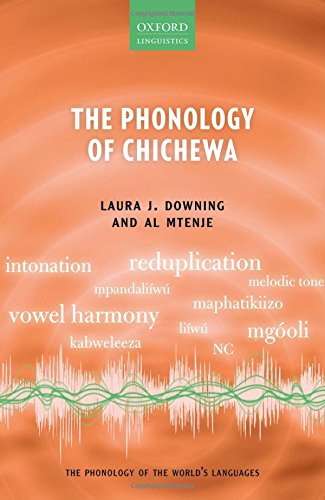
Product details:
ISBN-10 : 0191037733
ISBN-13 : 9780191037733
Author: Laura J. Downing, Al Mtenje
This book provides thorough descriptive and theory-neutral coverage of the full range of phonological phenomena of Chichewa, a Malawian Bantu language. Bantu languages have played and continue to play an important role as a source of data illustrating core phonological processes such as vowel harmony, nasal place assimilation, postnasal laryngeal alternations, tonal phenomena such as High tone spread and the OCP, prosodic morphology, and the phonology-syntax interface. Chichewa, in particular, has been a key language in the development of theoretical approaches to these phenomena. In this volume, Laura Downing and Al Mtenje examine not only these well-known features of Chichewa but also less well-studied phonological topics such as positional asymmetries in the distribution of segments, the phonetics of tone, and intonation. They survey important recent theoretical approaches to phonological problems such as focus prosody, reduplication, and vowel harmony, where Chichewa data is routinely referred to in the literature. The book will serve as a resource for all phonologists interested in these processes, regardless of their theoretical background, as well as Bantu scholars and linguists working on interface issues.
The Phonology of Chichewa 1st Table of contents:
1: Introduction
1.1 The Chichewa language
1.2 Chichewa and phonological theory
1.3 Goals of this work
2: Grammatical sketch
2.1 Phoneme inventory and transcription system
2.2 Structure of Chichewa words
2.2.1 Structure of nominals
2.2.2 Structure of verbs
2.2.3 Adjectives and adverbials
2.3 Word order and agreement in noun phrases and verb phrases
2.3.1 Word order and agreement in the noun phrase
2.3.2 Word order in the verb phrase
2.4 Clause structure
2.4.1 Word order and agreement within the main clause
2.4.2 Structure of questions
2.4.2.1 Content questions
2.4.2.2 Polar (choice/yes-no) questions
2.4.3 Subordinate clause types
2.4.3.1 Relative clauses
2.4.3.2 Verb complement clauses
3: Segmental phonology: Consonants
3.1 Consonant phoneme inventory
3.1.1 Standard Chichewa
3.1.2 Dialect variation
3.2 The Chichewa consonant inventory and Proto-Bantu
3.3 Positional restrictions on the distribution of consonants
3.4 Alternations in NC sequences
3.4.1 Nasal place assimilation
3.4.2 Postnasal stop aspiration
3.4.3 Other restrictions on NC sequences
3.5 Morphologically conditioned consonant mutations
3.5.1 Root-initial patterns in noun class 5/6
3.5.2 Causative spirantization
4: Segmental phonology: Vowels
4.1 Vowel inventory of Chichewa and relation to Proto-Bantu
4.2 Positional restrictions on the distribution of vowels
4.3 Vowel height harmony (VHH)
4.4 Phonological issues and approaches to VHH
4.4.1 Underspecification analysis of VHH (Moto 1989)
4.4.2 Markedness/faithfulness analysis of VHH (Beckman 1997)
4.4.3 Element/licensing approach to VHH
4.5 Concluding remarks
5: Syllable structure
5.1 Overview of possible syllable types
5.2 Possible consonant sequences and their syllabification
5.2.1 Consonant glide sequences
5.2.2 Nasal-homorganic consonant (NC) sequences
5.3 Epenthesis strategies in loanword adaptation of consonant sequences
5.4 Syllabic nasals derived from nasal-initial prefixes
5.4.1 Contraction of copula ndi before associative ya- or wa-
5.4.2 Contraction of the Object Marker ndi
5.4.3 Contraction of mu-
5.5 Vowel sequences and their syllabification
5.5.1 Glide formation in the inflectional prefix context
5.5.2 Vowel deletion in the inflectional prefix context
5.5.3 Glide insertion and vowel assimilation at macrostem and stem junctures
5.5.4 Deletion of demonstrative vowels
5.5.5 No hiatus resolution across word boundaries
5.6 Summary and remaining issues
6: Tonal phonology: Lexical tone patterns
6.1 Basics of Chichewa tone
6.2 Tone of nouns and verb stems
6.2.1 Tone of nouns
6.2.2 Verb stem tone
6.3 Processes affecting tone realization
6.4 Tone patterns of proclitics and enclitics
6.4.1 Tone doubling and plateauing in proclitics
6.4.2 Tone shift in enclitics
6.5 The phonetics of tone
6.6 Accentual properties of the Chichewa tone system
7: Grammatical tone patterns of affirmative main clause verbs
7.1 Grammatical tone in Bantu languages
7.2 Tone pattern 1: Imperative, perfective, permissive
7.2.1 Imperative
7.2.2 Perfective
7.2.3 Permissive `able to´ mood
7.2.4 Intensive form
7.2.5 Adding an Object Marker
7.3 Tone pattern 2: Subjunctive mood
7.4 Tone pattern 3: Simple past tense
7.5 TONE PATTERN 4: INFINITIVE, PRESENT PROGRESSIVE, RECENT PAST, PAST HABITUAL (a)
7.5.1 Infinitive
7.5.2 Present progressive
7.5.3 Recent past
7.5.4 Past habitual tense (a)
7.5.5 Intensive form
7.5.6 Adding an Object Marker
7.6 TONE PATTERN 5: PAST HABITUAL (b), CONTINUATIVE, NECESSITIVE
7.6.1 Past habitual (b)
7.6.2 Continuative
7.6.3 Necessitive
7.6.4 Intensive form
7.6.5 Adding an Object Marker
7.7 Tone pattern 6: Remote past, present habitual
7.7.1 Remote past
7.7.2 Present habitual
7.7.3 Intensive form
7.7.4 Adding an Object Marker
7.8 Tone pattern 7: Near future and distant future
7.8.1 Near future tense
7.8.2 Distant future tense
7.8.3 Intensive form
7.8.4 Adding an Object Marker
7.9 Tone pattern 8: Sequential perfect and the `just; merely´ aspect
7.9.1 Sequential perfective aspect
7.9.2 The `just; merely´ mood
7.9.3 Intensive form
7.9.4 Adding an Object Marker
7.10 Interim summary: Analytical issues raised by grammatical tone
8: Grammatical tone patterns of negative and relative verbs
8.1 Negative paradigms
8.1.1 Negative tone pattern 1
8.1.1.1 Basic verb paradigms in negative tone pattern 1
8.1.1.2 Intensive forms
8.1.1.3 Adding an Object Marker
8.1.2 Negative tone pattern 2
8.1.2.1 Negative imperative mood (cf. tone pattern 1, section 7.2)
8.1.2.2 Negative subjunctive mood (cf. tone pattern 2, section 7.3)
8.1.2.3 Negative infinitive mood (cf. tone pattern 4, section 7.5)
8.1.2.4 Negative sequential perfective (cf. tone pattern 8, section 7.9)
8.1.2.5 Negative near future (cf. tone pattern 7, section 7.8)
8.1.2.6 Negative distant future (cf. tone pattern 7, section 7.8)
8.1.3 Negative tone pattern 3
8.1.3.1 Negative perfective and simple past tense
8.1.3.2 Negative permissive `able to´ mood (cf. tone pattern 1, section 7.2)
8.1.4 Tone pattern 4: Negative present habitual (cf. tone pattern 6, section 7.7)
8.1.5 Summary table
8.2 Relative paradigms
8.2.1 Relative tone pattern 1: No change
8.2.2 Relative tone pattern 2: Add a high tone to the initial syllable
8.2.3 Relative tone pattern 3: Add a high tone to the initial syllable and to the penult
8.2.4 Summary table
8.3 Where is grammatical tone represented in the grammar?
8.3.1 Do TAMs or other affixes which introduce the same tone pattern form a semantic natural class?
8.3.2 If several competing melodic tone patterns can be introduced by a particular form, does morpho
8.3.3 Where in the grammar are the grammatical tone patterns represented?
9: Prosodic morphology
9.1 Evidence for disyllabic minimality
9.1.1 Augmentation of monosyllabic forms
9.1.2 Constructions requiring disyllabic bases
9.2 Nominal reduplication
9.3 Verbal reduplication
9.4 The disyllabic syndrome
10: Phrasal phonology
10.1 Phonological correlates of prosodic phrasing
10.2 Role of syntax in defining Chichewa prosodic phrasing
10.3 The phonology-syntax interface: Aligning syntactic and prosodic constituents
10.4 Does focus condition prosodic phrasing?
10.5 Typological issues
10.5.1 Do all languages have focus prosody?
10.5.2 Do all languages have both a Phonological Phrase level and an Intonation Phrase level?
11: Intonation
11.1 Intonation in declaratives
11.2 Intonation in content questions
11.3 Intonation in polar questions
11.4 Emphasis prosody
11.5 Typological issues
People also search for The Phonology of Chichewa 1st:
the phonology of hungarian
ch phonology
the phonetics of sound change ohala
the phoneme /ch/ is
the phonetic chart
Tags: Phonology, Chichewa, Laura Downing, Al Mtenje
You may also like…
dictionaries & phrasebooks
Biology and other natural sciences - Genetics
Genomic Medicine A Practical Guide 1st edition by Laura Tafe,aria Arcila 3030229211 9783030229214
Politics & Philosophy - Sociology
Modern Slavery A Documentary and Reference Guide Laura J. Lederer
Politics & Philosophy - Social Sciences
Gender, UN peacebuilding, and the politics of space : locating legitimacy Laura J. Shepherd
dictionaries & phrasebooks
Studies in the Phonology of Colloquial English 1st Edition by Lodge ISBN 131743773X 9781317437734




